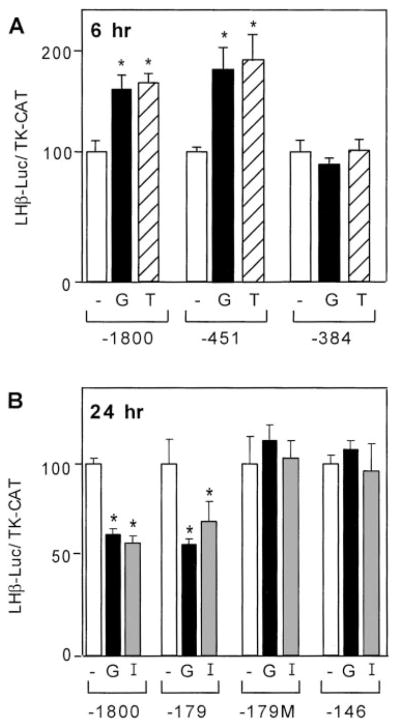Fig. 6.
Acute induction and long-term repression by GnRH occur through different regions of the LHβ promoter. A, For the short-term treatment, LβT4 cells were transiently transfected with either 15 μg –1800LHβ-Luc or the equimolar amount of the one of the following −451 or −384 truncated LHβ reporter plasmid and 5 μg TK-CAT plasmid as an internal control. Sixteen hours after transfection, cells were treated with ethanol vehicle (−), 10 nM GnRH agonist (G), or 100 nM TPA (T) for 6 h before harvest. B, For the long-term treatment, LβT4 cells were transiently transfected with either 15 μg –1800LHβ-Luc or the equimolar amount of the one of the following: −179, −179M, or −146 truncated LHβ reporter plasmids and 5 μg TK-CAT as an internal control. Sixteen hours after transfection, cells were treated with ethanol vehicle (−), 1 nM GnRH agonist (G), or 500 nM ionomycin (I) for 24 h before harvest. The value of the untreated sample for each time point was set to 100 to allow direct comparison of the magnitude of the GnRH induction. Results are the mean ± SEM of three independent experiments, each performed in duplicate. Values marked with an asterisk are statistically different from the value of untreated cells within the reporter transfected (P < 0.05).

